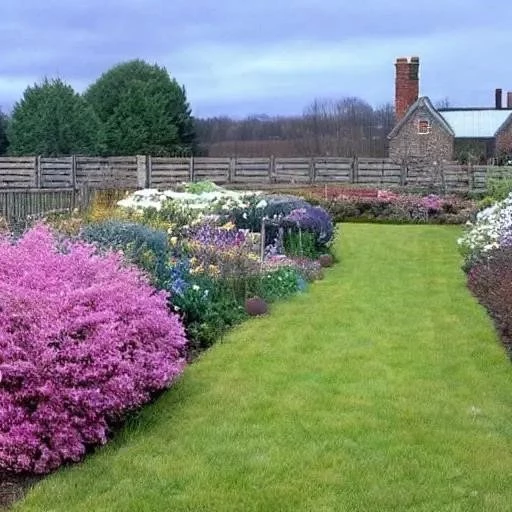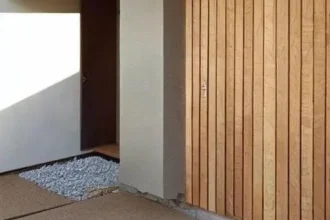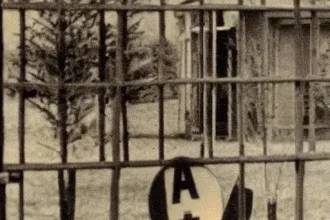For many‚ Zone 3 – a realm where winter’s icy grip can seem insurmountable – often daunts aspiring gardeners with its abbreviated growing seasons and brutal cold snaps‚ presenting formidable challenges to cultivating a vibrant landscape. Yet‚ within this challenging climate lies an incredible opportunity for resilience and remarkable growth‚ transforming seemingly barren landscapes into vibrant tapestries of life‚ proving that even the harshest conditions can yield profound beauty. This article will unveil the secrets‚ drawing upon the ingenuity of seasoned cultivators and cutting-edge horticultural science‚ empowering you to cultivate a thriving oasis‚ defying the deep freeze with unprecedented success and bountiful harvests.
Characterized by average annual extreme minimum temperatures ranging from a formidable -40°F to -30°F (-40°C to -34.4°C)‚ Zone 3 gardeners face a dramatically foreshortened window for planting‚ nurturing‚ and harvesting‚ frequently contending with unpredictable frosts extending late into spring and often arriving unexpectedly early in autumn. Beyond the obvious‚ pervasive cold‚ factors like deeply frozen ground‚ specific soil compositions‚ and the limited sun exposure during critical growth periods demand a nuanced‚ strategic approach‚ rendering conventional gardening wisdom often insufficient for sustained success. Understanding these unique climatic pressures is‚ therefore‚ the first pivotal step toward crafting a garden that not only survives but truly flourishes‚ becoming a testament to adaptability and horticultural prowess.
| Aspect | Key Information for Zone 3 Gardening |
|---|---|
| Climate Characteristics | Short growing season (typically 90-120 days)‚ extreme winter lows (-40°F to -30°F)‚ late spring/early fall frosts‚ potential for sudden temperature swings. |
| Essential Strategies | Season extension (cold frames‚ row covers)‚ precise plant selection (Zone 3+ hardy)‚ soil enrichment (compost‚ mulch)‚ strategic site placement (sun exposure‚ windbreaks). |
| Recommended Plants | Vegetables: Root crops (carrots‚ potatoes‚ beets)‚ brassicas (cabbage‚ kale)‚ peas‚ beans‚ cold-hardy greens. Fruits: Saskatoons‚ currants‚ raspberries‚ cold-hardy apples/cherries. Perennials: Hostas‚ daylilies‚ some coneflowers‚ peonies‚ specific shrub roses. |
| Critical Tools & Techniques | Raised beds‚ season extenders (hoop houses‚ cloches)‚ seed starting indoors‚ heavy mulching‚ diligent frost protection‚ proper winterization of plants. |
| Reference Link | USDA Plant Hardiness Zone Map |
The bedrock of any triumphant Zone 3 garden is unequivocally intelligent plant selection. Rather than succumbing to the allure of non-hardy varieties‚ gardeners must consciously prioritize plants specifically rated for Zone 3 or even colder‚ effectively ensuring their inherent resilience against the harsh climate. This judicious approach often involves embracing native species‚ which have naturally adapted to local conditions‚ or choosing heritage varieties and modern cultivars meticulously bred for superior cold tolerance and shorter maturation periods. As Dr. Alistair Finch‚ a renowned botanist and expert in northern horticulture‚ eloquently puts it‚ “Selecting the right plant is not merely a choice; it’s a pivotal investment in your garden’s future‚ a profound testament to understanding and respecting your specific microclimate‚ a decision that ripples through every subsequent success.” Consider the robust rhubarb‚ certain apple varieties like the remarkably resilient Honeycrisp or Parkland‚ or the incredibly versatile saskatoon berries – all thriving examples of species perfectly suited for these challenging conditions‚ offering both beauty and sustenance.
Beyond plant choice‚ the very foundation of your garden—the soil—demands meticulous attention. In colder zones‚ creating deep‚ well-drained‚ and organically rich soil is not merely beneficial; it is absolutely critical for plant survival and vigorous growth. Incorporating substantial amounts of compost‚ well-rotted manure‚ and other organic matter significantly improves soil structure‚ enhances water retention during dry spells‚ and‚ crucially‚ provides insulation against freezing temperatures. Mulching‚ particularly with straw‚ wood chips‚ or shredded leaves‚ becomes an incredibly effective‚ indispensable practice‚ acting as a garden’s protective blanket‚ conserving moisture‚ suppressing weeds‚ and stabilizing soil temperatures‚ thereby shielding delicate root systems from extreme fluctuations. Furthermore‚ establishing raised beds can dramatically extend the growing season by allowing the soil to warm up more rapidly in spring and drain more efficiently‚ circumventing the perennial problem of cold‚ waterlogged earth.
Perhaps the most revolutionary aspect of successful Zone 3 gardening centers on mastering season extension techniques. With such a brief natural window‚ every additional day of warmth and protection becomes invaluable‚ transforming marginal possibilities into flourishing realities. Tools like cold frames‚ row covers‚ and miniature hoop houses act as a garden’s essential winter coat‚ providing crucial protection against the biting cold and significantly extending the productive life of your cherished plants into both early spring and late autumn. Starting seeds indoors under controlled conditions gives plants a vital head start‚ allowing them to develop into robust seedlings ready for transplanting once the immediate danger of severe frost has passed. This strategic planning‚ meticulously executed‚ can effectively add weeks‚ even months‚ to your productive gardening year‚ turning what might be a fleeting harvest into a truly abundant bounty.
Finally‚ embracing consistent watering‚ thoughtful nutrition‚ and proactive pest management rounds out the essential tenets for Zone 3 triumph. While cold-hardy plants are resilient‚ they still require steady moisture‚ particularly during dry periods or when newly established; deep‚ infrequent watering encourages strong root development‚ making plants more drought-tolerant and robust. Regular soil amendments and balanced fertilizers‚ applied judiciously based on soil tests‚ ensure your plants receive the essential nutrients needed to power through their accelerated growth cycle. Moreover‚ by integrating insights from AI-driven climate predictions and traditional ecological knowledge‚ gardeners can adopt integrated pest management strategies‚ focusing on prevention and early detection‚ thereby minimizing the need for chemical interventions and fostering a healthier‚ more sustainable garden ecosystem. This holistic approach‚ meticulously applied‚ cultivates not just plants‚ but a resilient and thriving garden spirit.
Zone 3 gardening‚ far from being an insurmountable challenge‚ is ultimately about innovating‚ adapting‚ and profoundly celebrating the tenacity of life itself. Armed with these comprehensive insights and a spirit of unwavering determination‚ gardeners can confidently transform their challenging plots into vibrant havens of productivity and profound beauty‚ proving that even in the face of the most formidable climates‚ human ingenuity and passion for nature can prevail. The future of gardening in colder climates is remarkably bright‚ promising an era of unprecedented yields‚ sustainable practices‚ and profound satisfaction for those willing to embrace its unique demands‚ cultivating not merely plants‚ but a deeper connection to the earth and its extraordinary capabilities.






